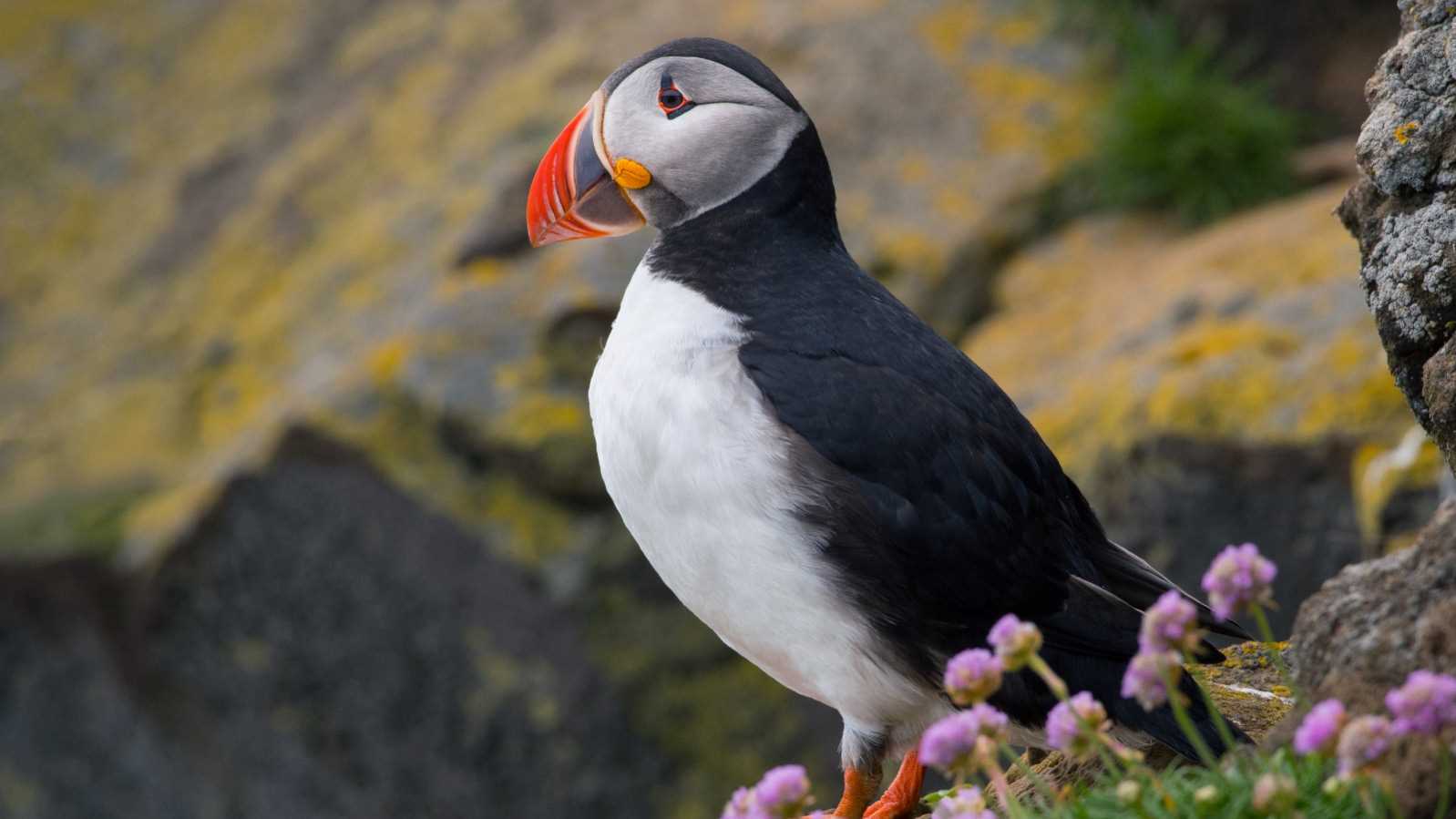Call +1.800.397.3348 or contact your travel advisor
For anyone who loves seeing legendary sites up close and walking around gorgeous landscapes, there’s a destination in the North Atlantic that has it all. The British and Irish Isles—which includes Scotland, Wales, and the 6,000-plus islands around them—pack in endless fascination for travelers. For nature buffs, a trip to this Atlantic archipelago is an especially magical experience. It’s a chance to see wildlife and rare plants in the wild, all while hiking in beautiful surroundings dotted with archaeological ruins and local charm. Get Inspired By Photos, Videos, Webinars, Stories, And Exclusive Offers. Sign Up
A voyage around this part of the Atlantic brings unexpected daily discoveries along the cliffs, shores, and hiking trails of the islands. On a Lindblad expedition, there's a chance of seeing bottlenose dolphins and the occasional harmless basking shark in the ocean. Circling overhead may be a dazzling display of local seabirds who visit small specks of land to attend to their burrows, as you observe these behaviors nearby. Here are just a handful of the in-real-life natural sights to look out for as you explore these beautiful isles.
Close Encounters with Stunning Local Birds
The striking seabird known as the northern gannet has been endangered since the 19th century, but it’s slowly making a comeback. On a recent Lindblad expedition near Ireland’s historic Skellig Michael, guests witnessed tens of thousands of northern gannets flying overhead and landing on the island to nest. The gannets took turns feeding in the North Sea and returning to the island to make a nest in the stratified sandstone. Nesting takes place for a few months starting in the spring, so travelers aboard expeditions in May stand a strong chance of seeing this in action.
Skellig Michael is known for its sixth-century Gaelic monastery, made of striking stone structures set on a terraced mountaintop—and more recently, for its appearance in the Star Wars films The Force Awakens and The Last Jedi. The island's colonies of puffins even inspired the adorable, wide-eyed species called "porgs" which appear in the films.
For an even closer encounter with puffins, you can disembark with a small group of Lindblad guests on Scotland’s Staffa Island and take a walk to the puffin colony to watch as the birds fly out of their burrows and land right alongside you. Staffa’s geology is fascinating with its dramatic columnar basalt cliffs. The waves pound with such force that they formed a cliffside hollow known as Fingal’s Cave, which inspired Felix Mendelssohn’s composition, the Hebrides Overture.
Sightings of Magnificent Marine Animals
While sailing along the coast of Britain and Ireland, keep a close eye out and you may even spot a basking shark. Although they look huge and imposing, basking sharks are filter feeders who rely on the area’s blooming plankton for food. Seeing one from the ship is a special and unforgettable sight.
The icy waters near Scotland’s Isle of Lewis have abundant marine life too. As you approach the island, Lindblad’s undersea team may find the conditions perfect for capturing video footage of the colorful wildlife in the plankton-rich waters—feather stars, sea anemones, squat lobsters—to share with you back on board the ship.
Seal-lovers will also have an excellent chance of spotting their favorite marine mammals. Gray seals and common seals often cluster around the rocky shores of many of the islands that we visit. Keep watch out for their long, dark bodies hauled-out on the beaches. One such island to look for them is Foula, nestled at the southern end of Shetland. Hosting a very small human population who live off the land, Foula is also known for the incredible seabirds who come there to nest in the spring and summertime. On any given day, you may find an array of local birds like guillemots, gannets, kittiwakes, shags, and fulmars.
Glimpses of Unusual Plant Life
Ice sheets in the British Isles wiped out much of the area’s endemic plant life ages ago, but the islands still have roughly 50 species of plants that only grow in this part of the North Atlantic. One of these is the Shetland mouse-ear, also known as Edmonston’s chickweed (Cerastium negrescens), a lovely white flower that grows in the rocks of Shetland. It was discovered there by future botanist Thomas Edmonston when he was just 12 years old. In Orkney, a UNESCO World Heritage Site known for its ancient stone homes, burial grounds, and seaweed-carpeted shores, look out for the gorgeous purple-blue Scottish primrose (Primula scotica), which blooms in May. Britain and Ireland have countless other indigenous and cosmopolitan plant species with wonderful names and characteristics. One to keep an eye out for at stops in southwestern England and southern Ireland is the "string-of-sausage lichen" (Ustica articulate), with puffy stems that resemble little sausages and eye-catching tangles of green-grey branches that drape languidly over tree branches.
See the British and Irish isles as few ever have aboard National Geographic Explorer.




